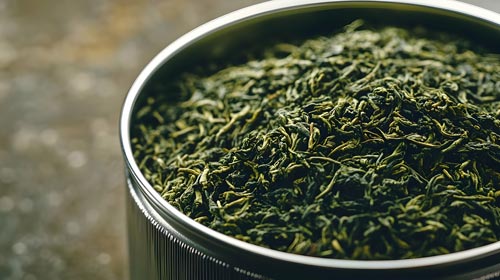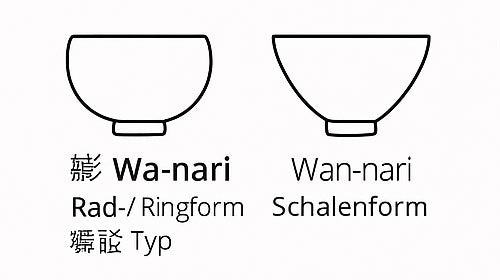Three steaming levels – and why they are so crucial for Matcha
Whether as whipped matcha or as a clear infusion in a teapot, green tea thrives on one crucial moment: steaming. Few steps alter the properties of the tea leaf as much as the length of time it is treated with hot steam. In Japanese processing, three stages are distinguished: Asamushi (short), Chumushi (medium), and Fukamushi (long).
Originally, these steaming levels were used primarily in connection with Sencha. But their effect is equally relevant for the production of Tencha —and thus for the quality of authentic Matcha . How the leaf is treated before it is ground into powder influences its color, texture, aromatic structure, and nutrient density .
Asamushi – clear structure, fine aromas
Steaming time: approx. 20–30 seconds
For Sencha: bright, precise, light
For Matcha: intense green, clear fiber structure, low abrasion loss
With Asamushi, the leaf tissue remains almost completely intact. The cell structures tightly enclose the ingredients, which is beneficial both during infusion and grinding:
-
The matcha from Asamushi-Tencha is particularly bright green because chlorophyll is preserved through the gentle treatment.
-
The leaves can be ground very finely without burning – ideal for ceremonial qualities.
-
The taste is fresh, vegetal, elegant , with clear sweetness and hardly any bitterness.
In matcha production, high-quality spring pickings (e.g. First Flush Tencha) are preferred to be steamed in the Asamushi style to protect the delicate notes.
Chumushi – harmonious and balanced
Steaming time: approx. 40–60 seconds
For Sencha: round, sweet, balanced
For Matcha: softer texture, denser body, mild umami
Chumushi offers the best of both worlds: The leaf is steamed to a point where it's soft enough for grinding, but structured enough to release its active ingredients. For Matcha, this means:
-
A slightly darker, rich green color due to the beginning restructuring of the cell layers
-
More expressive in taste, with fuller body and an umami content , which unfolds especially in the thicker preparation form (Koicha)
-
A velvety texture because the cell membranes have become more permeable
Chumushi is Growing Karma's preferred steaming level for many of its early summer tenchas – a time when leaf strength and amino acid content are ideally balanced.
Fukamushi – deep cushioning, creamy character
Steaming time: approx. 70–120 seconds
For Sencha: cloudy, intense, almost sweet
For Matcha: voluminous, round, but less clear
Fukamushi Tencha is steamed for significantly longer – with strong effects on cell structure and pigments.
-
The chlorophyll oxidizes minimally, which can result in a darker, olive-green powder color
-
The texture becomes extremely soft and creamy , which almost seems to “melt” when drinking
-
The taste is deep and sweet – but with less subtle top notes
In matcha production, Fukamushi is used less frequently for premium qualities, but is certainly used specifically, for example for culinary matcha or everyday, round teas for milk drinks.
Steaming as a quality feature in matcha production
What serves as a stylistic device for Sencha is a quality indicator for Matcha. Depending on the degree of steaming, not only the taste but also the behavior of the powder when whipped changes:
-
Asamushi Matcha can be sieved more finely , remains stable in the foam longer and has a higher luminosity
-
Chumushi Matcha develops a balanced body and is ideal for Koicha
-
Fukamushi Matcha dissolves well, but is less vibrant in color and is often chosen for stronger applications
Steam experiments at Growing Karma
In our German tea cultivation, we deliberately work with different steaming times – including for Tencha. This allows us to test how our locally grown tea leaves respond to the different steaming times:
-
Lightly shaded spring pickings usually receive an Asamushi steaming to preserve their freshness
-
Summer leaves with more body are ideal for chumushi
-
We occasionally use robust autumn pickings for Fukamushi experiments to produce deeper, sweeter powders
We do not see steaming as a mechanical step, but as a crucial moment in the art of tea – comparable to the degree of roasting in coffee or fermentation in wine.
Think about this the next time you drink matcha and ask yourself: How was this leaf steamed? How fine is the foam? How deep is the color? Perhaps you'll discover a new dimension – born from just a few seconds of steam. And perhaps you'll never think of matcha as just a powder again.




Leave a comment
This site is protected by hCaptcha and the hCaptcha Privacy Policy and Terms of Service apply.